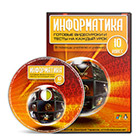WINDOWS 10 IS A SERIES OF PERSONAL COMPUTER
OPERATING SYSTEMS PRODUCED BY MICROSOFT
Windows 10 is a series of personal computer operating systems produced by Microsoft as part of its Windows NT family of operating systems. It is the successor to Windows 8.1, and was released to manufacturing on July 15, 2015, and to retail on July 29, 2015. Windows 10 receives new builds on an ongoing basis, which are available at no additional cost to users. Mainstream builds of Windows 10 are labeled version YYMM with YY representing the year and MM representing the month of release. For example the latest mainstream build of Windows 10 is Version 1803. There are additional test builds of Windows 10 available to Windows Insiders. Devices in enterprise environments can receive these updates at a slower pace, or use long-term support milestones that only receive critical updates, such as security patches, over their ten-year lifespan of extended support.
One of Windows 10's most notable features is support for universal apps, an expansion of the Metro-style apps first introduced in Windows 8. Universal apps can be designed to run across multiple Microsoft product families with nearly identical code—including PCs, tablets, Smartphone’s , embedded systems, Xbox One, Surface Hub and Mixed Reality. The Windows user interface was revised to handle transitions between a mouse-oriented interface and a touch screen-optimized interface based on available input devices—particularly on 2-in-1 PCs, both interfaces include an updated Start menu which incorporates elements of Windows 7's traditional Start menu with the tiles of Windows 8. Windows 10 also introduced the Microsoft Edge web browser, a virtual desktop system, a window and desktop management feature called Task View, support for fingerprint and face recognition login, new security features for enterprise environments, and DirectX 12.
Windows 10 received mostly positive reviews upon its original release in July 2015. Critics praised Microsoft's decision to provide a desktop-oriented interface in line with previous versions of Windows, contrasting the tablet-oriented approach of 8, although Windows 10's touch-oriented user interface mode was criticized for containing regressions upon the touch-oriented interface of Windows 8. Critics also praised the improvements to Windows 10's bundled software over Windows 8.1, Liveintegration, as well as the functionality and capabilities of the Cortana personal assistant and the replacement of Internet Explorer with Microsoft Edge. However, media outlets have been critical of changes to operating system behaviors, including mandatory update installation, privacy concerns over data collection performed by the OS for Microsoft and its partners and the adware-like tactics used to promote the operating system on its release.
Microsoft aimed to have Windows 10 installed on at least one billion devices in the two to three years following its release. Up to August 2016, Windows 10 usage was increasing, with it then plateauing, while eventually in 2018, it became more popular than Windows 7 (though that is still more used in most countries in Asia and Africa) and thus the single most used Windows version overall (at 48.18%, thus the other more used overall), though not on some continents as measured by web traffic. As of September 2018, the operating system is running on more than 700 million devices and has an estimated usage share of 32% on traditional PCs and 15% across all platforms (PC, mobile, tablet, and console).
At the Microsoft Worldwide Partner Conference in 2011, Andrew Lees, the chief of Microsoft's mobile technologies, said that the company intended to have a single software ecosystem for PCs, phones, tablets, and other devices. "We won't have an ecosystem for PCs, and one for phones, and one for tablets—they'll all come together."
In December 2013, technology writer Mary Jo Foley reported that Microsoft was working on an update to Windows 8 codenamed "Threshold", after a planet in Microsoft's Halo video game franchise. Similarly to "Blue" (which became Windows 8.1), Foley called Threshold a "wave of operating systems" across multiple Microsoft platforms and services, scheduled for the second quarter of 2015. Foley reported that among the goals for Threshold was to create a unified application platform and development toolkit for Windows, Windows Phone and Xbox One (which all use a similar Windows NT kernel).
In April 2014, at the Build Conference, Microsoft's Terry Myerson unveiled an updated version of Windows 8.1 that added the ability to run Windows Store apps inside desktop windows and a more traditional Start menu in place of the Start screen seen in Windows 8. The new Start menu takes after Windows 7's design by using only a portion of the screen and including a Windows 7-style application listing in the first column. The second column displays Windows 8-style app tiles. Myerson said that these changes would occur in a future update, but did not elaborate. Microsoft also unveiled the concept of a "universal Windows app", allowing Windows Store apps created for Windows 8.1 to be ported to Windows Phone 8.1 and Xbox One while sharing a common codebase, with an interface designed for different device form factors, and allowing user data and licenses for an app to be shared between multiple platforms. Windows Phone 8.1 would share nearly 90% of the common Windows Runtime APIs with Windows 8.1 on PCs.
Screenshots of a Windows build which purported to be Threshold were leaked in July 2014, showing the previously presented Start menu and windowed Windows Store apps followed by a further screenshot in September 2014 of a build identifying itself as "Windows Technical Preview", numbered 9834, showing a new virtual desktop system, a notification center, and a new File Explorer icon.
Threshold was officially unveiled during a media event on September 30, 2014, under the name Windows 10; Myerson said that Windows 10 would be Microsoft's "most comprehensive platform ever", providing a single, unified platform for desktop computers, laptops, tablets, smartphones, and all-in-one devices. He emphasized that Windows 10 would take steps towards restoring user interface mechanics from Windows 7 to improve the experience for users on non-touch devices, noting criticism of Windows 8's touch-oriented interface by keyboard and mouse users. Despite these concessions, Myerson noted that the touch-oriented interface would evolve as well on 10.
In regards to Microsoft naming the new operating system Windows 10 instead of Windows 9, Terry Myerson said that "based on the product that's coming, and just how different our approach will be overall, it wouldn't be right to call it Windows 9." He also joked that they could not call it "Windows One" (alluding to several recent Microsoft products with a similar brand, such as OneDrive, OneNote, and Xbox One) because Windows 1.0 already existed. Tony Prophet, Microsoft Vice President of Windows Marketing, said at a San Francisco conference in October 2014 that Windows 9 "came and went", and that Windows 10 is not "an incremental step from Windows 8.1," but "a material step. We're trying to create one platform, one eco-system that unites as many of the devices [sic] from the small embedded Internet of Things, through tablets, through phones, through PCs and, ultimately, into the Xbox."
Further details surrounding Windows 10's consumer-oriented features were presented during another media event held on January 21, 2015, entitled "Windows 10: The Next Chapter". The keynote featured the unveiling of Cortana integration within the operating system, new Xbox-oriented features, Windows 10 Mobile, an updated Office Mobile suite, Surface Hub—a large-screened Windows 10 device for enterprise collaboration based upon Perceptive Pixel technology, along with HoloLens‑augmented reality eyewear and an associated platform for building apps that can render holograms through HoloLens.
Additional developer-oriented details surrounding the "Universal Windows Platform" concept were revealed and discussed during Microsoft's developers' conference Build. Among them were the unveiling of "Islandwood", which provides a middleware toolchain for compiling Objective-C based software (particularly, iOS software) to run as universal apps on Windows 10 and Windows 10 Mobile. A port of Candy Crush Saga made using the toolkit, which shared much of its code with the iOS version, was demonstrated, alongside the announcement that the King-developed game would be bundled with Windows 10 at launch.

 Получите свидетельство
Получите свидетельство Вход
Вход












 Windows 10 is a series of personal computer operating systems produced by microsoft (19.55 KB)
Windows 10 is a series of personal computer operating systems produced by microsoft (19.55 KB)
 0
0 129
129 1
1 Нравится
0
Нравится
0







